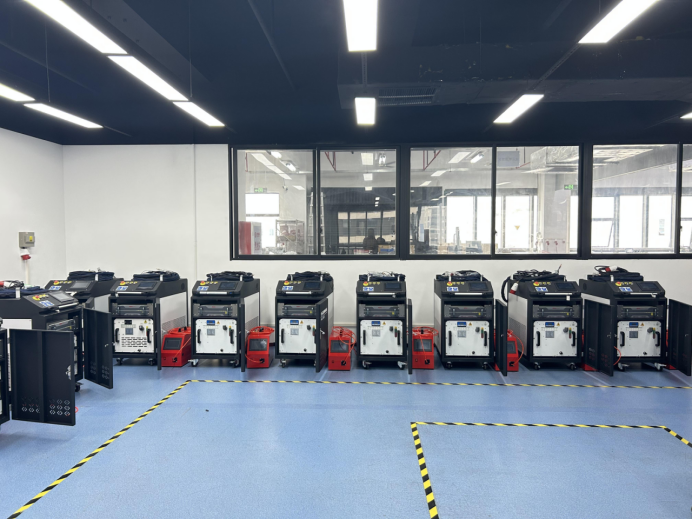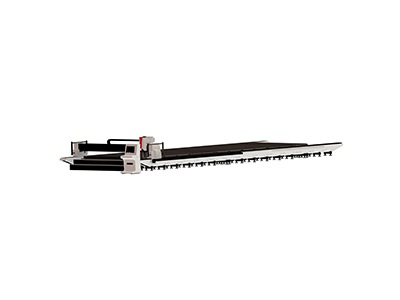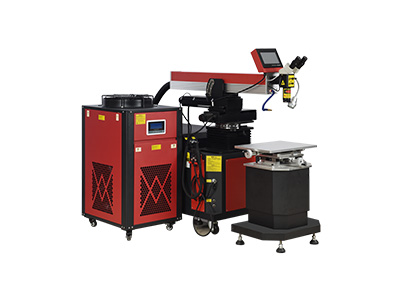- No.609, Centre Of Huijin Nanxiang, Yinxiang Road, Nanxiang Town, Jiading District, Shanghai, China
- sherry@sanmachines.com
- +86-18616767021
What factors affect laser deep penetration welding?
As one of the two basic modes of laser welding (the other is heat conduction welding), laser deep penetration welding is increasingly widely used. In order to obtain higher laser deep penetration welding benefits, this article summarizes the main influencing factors of this welding method, including laser power density, welding speed, focal position, shielding gas, workpiece joint assembly gap, material nature and other aspects, to help users to seek benefits and avoid harm, and make the best use of lasers and laser equipment.

1 Laser power density
The premise of deep penetration welding is to focus the laser spot so that it has a sufficiently high power density, so the laser power density has a decisive influence on the weld formation. The laser power controls the penetration depth and welding speed at the same time. For a laser beam of a certain diameter, when the laser power is increased, the penetration depth deepens and the welding speed increases.
There is generally a critical value for the laser power that reaches a certain welding penetration depth. When this critical value is reached, the molten pool boils violently, and when it exceeds the critical value, the penetration depth will decrease sharply. In addition, due to the force of metal vapor, small holes will be formed in the molten pool, and small holes are the key to deep penetration welding.
The focal spot power density is not only proportional to the laser power, but also related to the laser beam and focusing optical path parameters.

2 Welding speed
During deep penetration welding, the welding speed is inversely proportional to the penetration depth. If the welding speed is increased while keeping the laser power unchanged, the heat input will decrease and the penetration depth will also decrease. Therefore, appropriately reducing the welding speed can increase the penetration depth, but too low a speed will cause excessive melting of the material and weld penetration of the workpiece. Therefore, for a specific laser power and a specific thickness and type of material, there is a suitable welding speed range for obtaining the maximum penetration depth.
3 Focus position
During deep penetration welding, the focus position is crucial to maintain sufficient power density. The change in the relative position of the focus and the workpiece surface directly affects the width and depth of the weld. Only when the focus is located at a suitable position on the workpiece surface can the weld form a parallel section and obtain the maximum penetration depth.

4 Shielding gas
The shielding gas has two functions: 1) Exclude the air in the local welding area to protect the working surface from oxidation; 2) Suppress the generation of plasma clouds during high-power laser welding.
5 Workpiece joint gap
The gap between workpieces and the assembly gap are directly related to the penetration depth and weld width of the welded workpiece. In deep-melting welding, if the joint gap exceeds the spot size, welding cannot be performed; if the joint gap is too small, sometimes the process will produce undesirable effects such as overlapping plates and difficult fusion; if the joint gap is too large, it is very easy to weld through; slow welding can make up for some weld defects caused by too large gaps, while high-speed welding narrows the weld and has stricter assembly requirements.
6 Material nature
The absorption of laser by the workpiece material determines the efficiency of laser welding. There are two factors that affect the absorption rate of the material to the laser: 1) Material resistivity. After measuring the absorption rate of the polished surface of different materials, it is found that the absorption rate of the material to the laser is proportional to the square root of the resistivity, and the resistivity changes with the temperature; 2) The surface state of the material has a more important influence on the beam absorption rate, and thus has a significant effect on the welding effect.
Related product links


































 Welder News
Welder News




